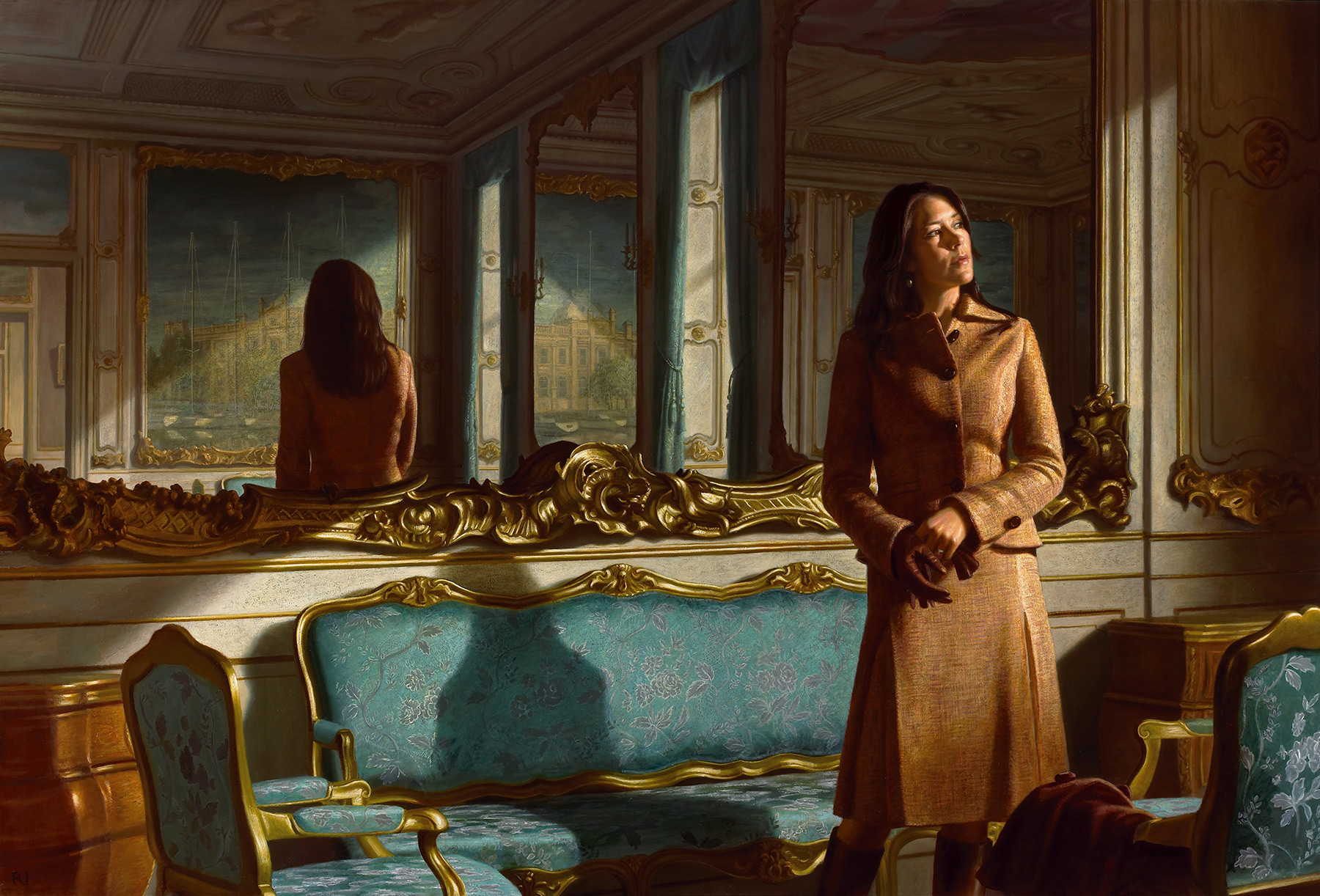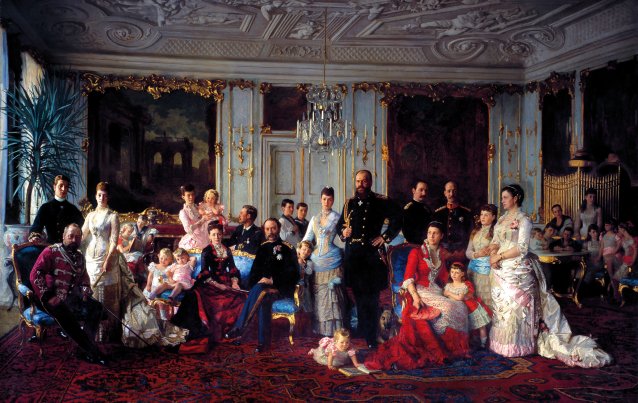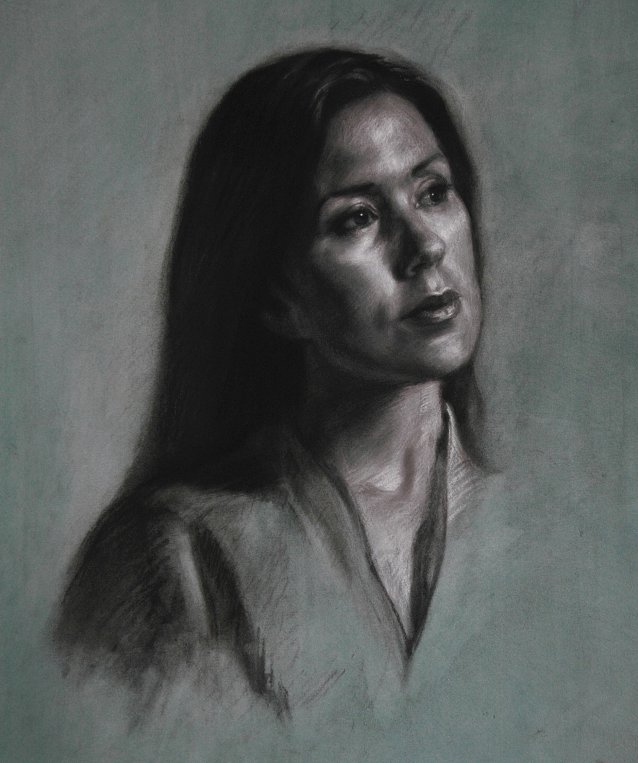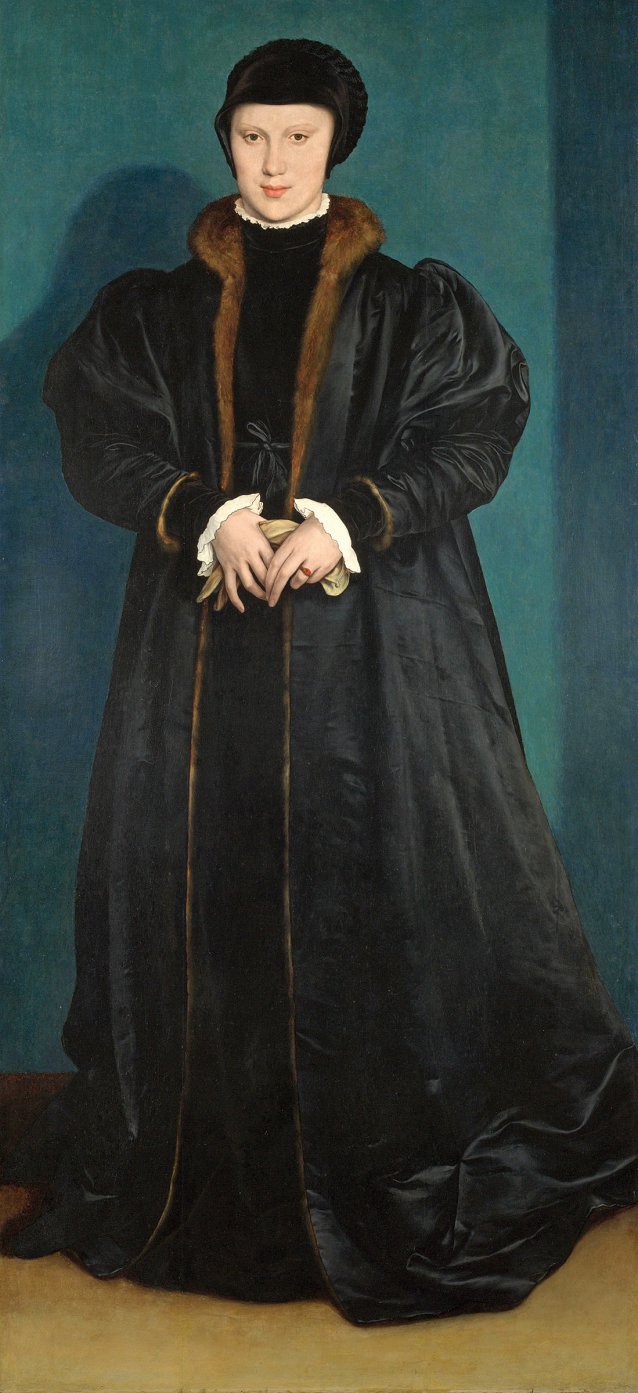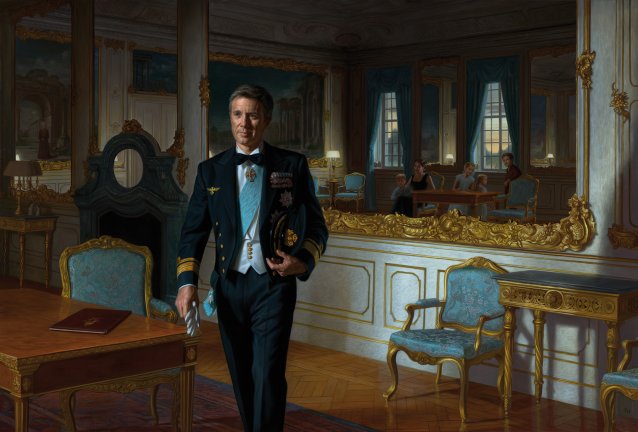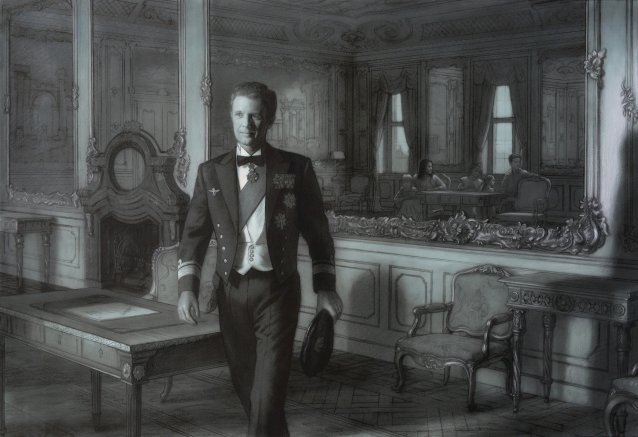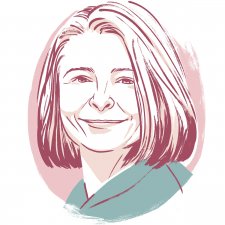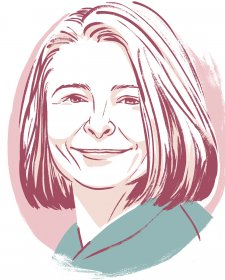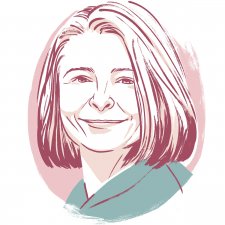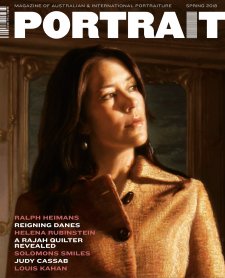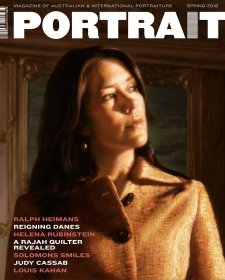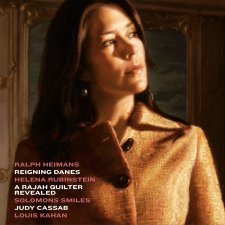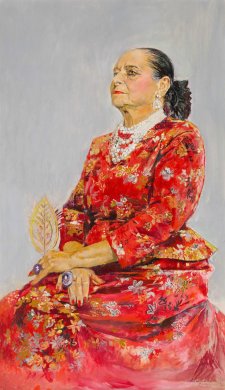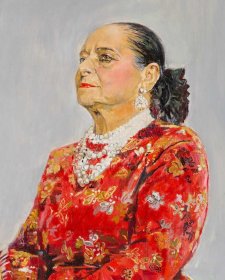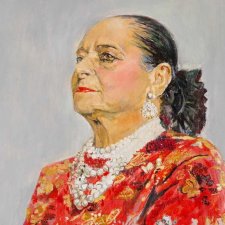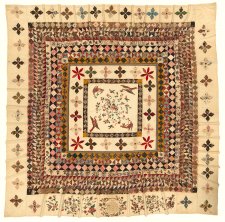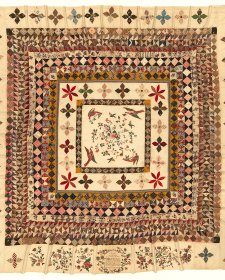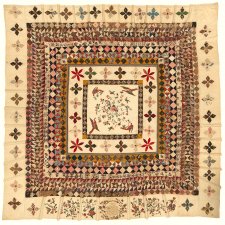The Crown Prince seems to have risen from the chair at the table next to him, which bears a folder with his monogram. As with the best of Heimans’ work, there is the suggestion of a narrative beyond the picture frame. The subject is stepping forward and looks ahead with the hint of a smile on his lips; his gaze does not meet ours, but we can see what he is looking at. As in the portrait of Crown Princess Mary, Heimans has replaced some of Jacopo Fabris’ recessed paintings in the Garden Room with mirrors, but this time they show the present – and indeed the future – rather than the past. In front of the Crown Prince, reflected in the mirror, are the Crown Princess and the couple’s four children, gathered around a table. The oldest child, Prince Christian, is standing, resting one arm on the back of a chair and looking towards his father.
Behind the family we can follow Crown Prince Frederik’s gaze further, through two of the room’s windows, to the Palace Garden. We see the outline of the great marble monument by the 18th century Danish sculptor Johannes Wiedewelt, symbolising the Danish nation, and there is an evening sky over the landscape so characteristic of Denmark, with distinctive colours and clouds.
Heimans has not replaced all the paintings with mirrors. But in this portrayal, the artist is more loyal to the story of the Crown Prince than to Fabris’ original works. So in one of them – on the far left – he has discreetly depicted the Crown Prince’s mother, Her Majesty the Queen, wearing a long, dark red dress. From her position beneath the painting’s antique, triumphal arch-like portal, she – like us, unnoticed – quietly observes her son and his family. In front of the painting in which the Queen is portrayed, there is a table, on which Heimans has placed two mythical Greenlandic tupilaqs. Together with Wiedewelt’s Denmark monument outside, they indicate the kingdom over which the Crown Prince will one day reign.
There is a sense of completeness in this portrait: the Crown Prince is presented surrounded by his immediate family – the children who have come into the world since his marriage, and the Crown Princess, whose background and transformation were depicted in Heimans’ earlier work. The Crown Prince is perceived as part of the order of succession, which is his innate destiny. From the picture with the historic scenery his mother observes him; meanwhile, he looks ahead at his eldest son, his eventual successor. The three of them are subtly linked through the artist’s choice of colour, which draws the eye through the composition, accentuating the depth of perspective he has skilfully created.
The Crown Prince is wearing the Danish Navy’s company uniform. He is carrying the cap in his left hand and a pair of white gloves in his right, a small but significant detail that mirrors Princess Mary’s portrait, and one which hints at their Royal duties. Denmark’s two Royal Orders of Chivalry are depicted: the Crown Prince is wearing the Order of the Elephant – Denmark’s highest ranked order – on the blue ribbon that hangs from his left shoulder, and around his neck is the Grand Commander Cross of the Order of the Dannebrog. On the uniform’s jacket we also see the chest star of the Order of the Elephant and the Dannebrog Star, along with a number of medals.
Here we see 50 year-old Crown Prince Frederik in his personal life and in his role as the heir to the throne. He has assumed the responsibility of being the future ruler of Denmark, The Faroe Islands and Greenland, and he performs his duties together with the family he has created with the Crown Princess. His eldest son, Prince Christian, will one day succeed him. Through the portrait, we are afforded a glimpse of this family in the royal setting at Fredensborg, at a moment in the early evening, an interplay between their public and private roles.
The result is a poignant and personal portrait of the Prince and his family, that reflects both the time of its creation and the time that has passed since the portrait of the Crown Princess was created. The pair will no doubt become works of enduring significance in the collection of the Museum.
